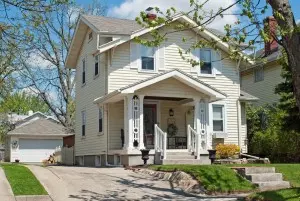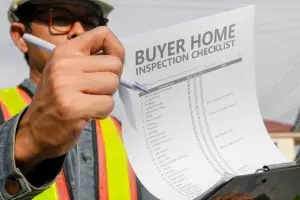How to Stage a House for Sale While Living in It: A Practical Guide for Homeowners

Wondering how to stage a house for sale while living in it? The truth is: it’s not easy, but it is doable with the right strategy. With a few intentional changes, you can create a space that appeals to buyers without turning your daily routine upside down.
Whether you’re selling your home in Tuckahoe, VA, or staging your home in Dallas, TX, the goal is the same: make your space look its best without putting your life completely on hold. In this Redfin article, we’ll walk you through realistic tips to help you declutter, depersonalize, and stay show-ready while still living your everyday life.
In this article:
What is staging?
Start with a strategic declutter
Depersonalize without making it feel empty
Keep it spotless (without losing your mind)
Create clear, functional spaces
Stay on top of daily maintenance
Use storage wisely (and creatively)
Stage the most important rooms first
Make a plan for showings
Consider partial or virtual staging help
FAQs: How to stage a house for sale while living in it
What is staging?
Staging is the process of preparing your home to appeal to the widest range of potential buyers. It involves arranging furniture, decor, and lighting in a way that highlights your home’s strengths and helps buyers imagine themselves living there. Effective staging goes beyond cleaning, it’s about creating an inviting space that feels move-in ready, often helping your home sell faster and for a higher price.
>> Read: Does Staging Help Sell a House? What Every Seller Should Know
Start with a strategic declutter
Decluttering is the foundation of any successful staging effort. The less visual noise in your home, the more spacious and inviting it will feel to buyers. Start by removing anything you don’t use daily, such as off-season clothes, extra kitchen gadgets, and overly personalized decor.
Focus on high-impact areas first:
- Countertops: Clear kitchen and bathroom surfaces down to just the essentials.
- Closets: Keep only what you need for the next few weeks; pack or store the rest.
- Entryways: Remove extra shoes, bags, and coats to keep the space clean and open.
- Floors and corners: Tuck away pet beds, baskets, and extra furniture that make rooms feel crowded.
Depersonalize without making it feel empty
When buyers tour your home, they’re trying to picture themselves living there, not you. That’s why depersonalizing is key. But that doesn’t mean your space has to feel sterile or cold.
The goal is to create a clean, inviting canvas that still feels lived in, just not your life specifically.
Start by removing:
- Family photos and personal memorabilia
- Kids’ artwork, diplomas, or anything with names
- Bold or highly specific decor choices (like themed rooms or niche collections)
Replace those personal touches with neutral, welcoming elements like:
- Framed art or mirrors
- Cozy throw pillows or blankets in soft tones
- Greenery or fresh flowers to add warmth and life
>> Dive in: 9 Undeniable Benefits of Home Staging When Selling Your House
Keep it spotless (without losing your mind)
Cleanliness can make or break a buyer’s first impression. Even the most beautifully staged home will fall flat if it feels dusty, cluttered, or has lingering odors. The trick is to build light, consistent cleaning into your daily routine—so deep cleans aren’t always necessary.
Pro tip: Keep a “showing-ready” cleaning caddy with essentials (wipes, glass cleaner, a duster) that you can grab quickly before showings.
Focus on high-impact areas:
- Kitchens and bathrooms: Wipe surfaces daily, keep sinks and mirrors spotless, and empty trash regularly.
- Floors: Vacuum and sweep often, especially if you have pets or kids.
- Windows and light fixtures: Clean glass and remove dust so natural light can shine through.
- Smells: Use neutral air fresheners or open windows to keep things fresh, but avoid heavy scents that could turn buyers off.
Create clear, functional spaces
Every room in your home should have one obvious purpose. Buyers should instantly understand how the space is meant to be used and be able to picture themselves using it that way.
If a room is currently a catch-all, choose the most buyer-friendly use and stage it accordingly. The clearer your layout, the easier it is for buyers to connect with your home.
Here’s how to make that happen:
- Remove excess furniture to open up floor space and improve flow.
- Define each area clearly. For example, don’t combine a home office, playroom, and guest room all in one.
- Highlight functionality with simple touches, like a desk and chair in an office, a made bed with nightstands in a bedroom, or barstools at the kitchen counter.
Stay on top of daily maintenance
Living in a staged home means keeping things consistently clean and clutter-free, which can feel like a full-time job without a system in place. The key is to create manageable daily habits that keep your home ready for showings at a moment’s notice.
Try this simple routine:
- Make the beds every morning, crisp bedding makes a big visual impact.
- Do a quick kitchen and bathroom wipe-down after each use.
- Use baskets or bins to corral toys, mail, or miscellaneous items at the end of each day.
- Keep laundry moving, no piles of clothes on beds, floors, or chairs.
- Take out the trash regularly, especially if you have pets or cook often.
Use storage wisely (and creatively)
When staging a home you’re still living in, smart storage solutions are your best friend. Try to keep everyday items out of sight, without cramming everything into closets buyers will be opening.
Here’s how to stay organized without sacrificing space:
- Rent a storage unit for larger items, seasonal decor, or anything you won’t need before moving.
- Use under-bed storage bins for off-season clothing, shoes, or toys.
- Designate a few cabinets or drawers for quick stashing before showings
- Invest in decorative baskets to hide clutter in plain sight on shelves or in living spaces.
- Avoid overstuffing closets, leave some space empty to show off storage potential.

Stage the most important rooms first
When time or energy is limited (which it often is), focus on the rooms that have the biggest impact on buyers. These are the spaces where staging makes the most difference and where buyers will form their strongest impressions.
Skip the heavy lifting in secondary areas like the garage, laundry room, or guest bath unless they really stand out. Focus your efforts where it counts most.
Prioritize these key areas:
- Living room: Showcase comfortable seating, clear surfaces, and good lighting.
- Kitchen: Keep counters clutter-free, add a bowl of fruit or a small plant, and make sure appliances are spotless.
- Primary bedroom: Use neutral bedding, clear nightstands, and soft lighting to create a calming retreat.
- Bathrooms: Fresh towels, clean counters, and a hint of greenery go a long way.
Make a plan for showings
One of the trickiest parts of staging while living in your home is staying ready for showings, often with short notice. Having a go-to plan can make the process a lot less stressful for you and your household.
Here are a few ways to stay prepared:
- Pack a “go bag” with snacks, chargers, pet supplies, and anything you’ll need to step out quickly.
- Create a last-minute checklist for tidying up: dishes in the dishwasher, lights on, trash out, clutter stashed.
- Make a pet plan, whether that’s taking them with you, using a pet sitter, or setting up a contained, clean area.
- Decide on a quick exit routine for kids or roommates, so everyone knows what to do when a showing is scheduled.
Consider partial or virtual staging help
If you’re overwhelmed by the idea of staging while living in your home, know that you don’t have to do it all alone. Partial and virtual staging can give your space a polished, market-ready look, without requiring a full furniture overhaul.
Here are a few options to consider:
- Partial staging: A professional stager works with what you already own, rearranging furniture and bringing in just a few key pieces to elevate your space.
- Virtual staging: Photos of empty or lightly furnished rooms are digitally enhanced with stylish furniture and decor, helping buyers visualize the home’s potential online.
- Agent-guided DIY tips: Many real estate agents offer simple, personalized staging advice as part of their service.
>> Check out: Staging a Home for a Quick Sale? Try Virtual Staging Photos
Life doesn’t pause, you just have to stage around it
Staging your home while you’re still living in it might feel overwhelming, but with a solid plan and a few smart habits, it’s entirely doable. By decluttering, creating functional spaces, and staying consistent with light upkeep, you can make a strong impression on buyers without putting your life on pause.
If you’re unsure where to start, talk to your real estate agent about what matters most in your local market. With the right approach, your lived-in home can still look like someone’s dream home.
FAQs: How to stage a house for sale while living in it
Do I really need to stage my home if it’s already furnished?
Yes, staging is more than just having furniture. It’s about arranging your space to highlight the home’s best features and help buyers imagine themselves living there. That often means editing or rearranging what you already have.
How do I keep my house clean every day for showings?
Stick to a daily routine: make the beds, do a quick kitchen and bathroom wipe-down, and stash everyday clutter in baskets or bins. Having a checklist by the door can make last-minute prep easier.
Where can I hide stuff during a showing?
Avoid cramming closets, they should look spacious. Use labeled storage bins under beds, in cabinets, or even temporarily in your car trunk or garage (neatly organized).
What if I have pets or kids?
Create a simple plan for showings: keep essentials packed and ready to go, and have a designated space to quickly store toys, pet beds, or litter boxes. Try to air out or freshen the space with neutral scents before buyers arrive.
Are there alternatives to traditional staging?
Yes, virtual staging can be a great option if you’re short on time, budget, or flexibility. It allows buyers to see a fully staged version of your home online, even if it’s still being lived in or sparsely furnished.
Is it hard to sell a house while living in it?
It can be challenging, but it’s definitely possible. The key is staying organized and keeping your space consistently clean and clutter-free. With some planning, flexibility, and a few strategic habits, you can successfully sell your home while still living in it, and make a strong impression on buyers in the process.
The post How to Stage a House for Sale While Living in It: A Practical Guide for Homeowners appeared first on Redfin | Real Estate Tips for Home Buying, Selling & More.
Categories
Recent Posts










